“Where there is Faith there is Love; where there is Love there is Peace; where there is Peace there is God; where there is God there is no need.”
Evelyn Buchanan in reference to Auchmar House, quoting Leo Tolstoy
Perched atop the Hamilton Mountain, the historic Auchmar House and the surrounding grounds referred to as Claremount Park, provided its residents a place of beauty and spiritual respite throughout its 165-year history. Built in 1855, the property has been home to influential citizens, a convalescence facility for members of the Royal Canadian Air Force, and a retreat centre run by the Sisters of Social Service. During these various reiterations, it was viewed as a place of peace for those able to enjoy its graces.
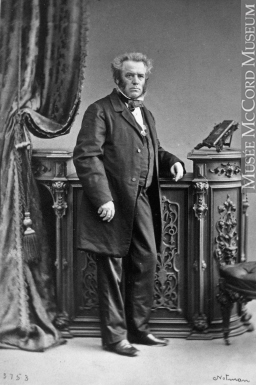
Credit: McCord Museum
Featuring gothic revival architecture, Auchmar House was founded by Sir Isaac Buchanan, a successful merchant, politician, and civic leader. Buchanan was born in Glasgow, Scotland, the son of a wealthy manufacturer. He came to Canada in April 1830, as a junior partner in the dry-goods import business William Guild Jr and Company in Montreal. In 1851, he settled in Hamilton permanently with his wife and children. After discovering the Hamilton Mountain while looking for a location to build a summer retreat, his affection for the area resulted in the extensive family home, where five of his eleven children were born. The building was named Auchmar, possibly in recollection of Sir Isaac Buchanan’s family estate in Scotland.
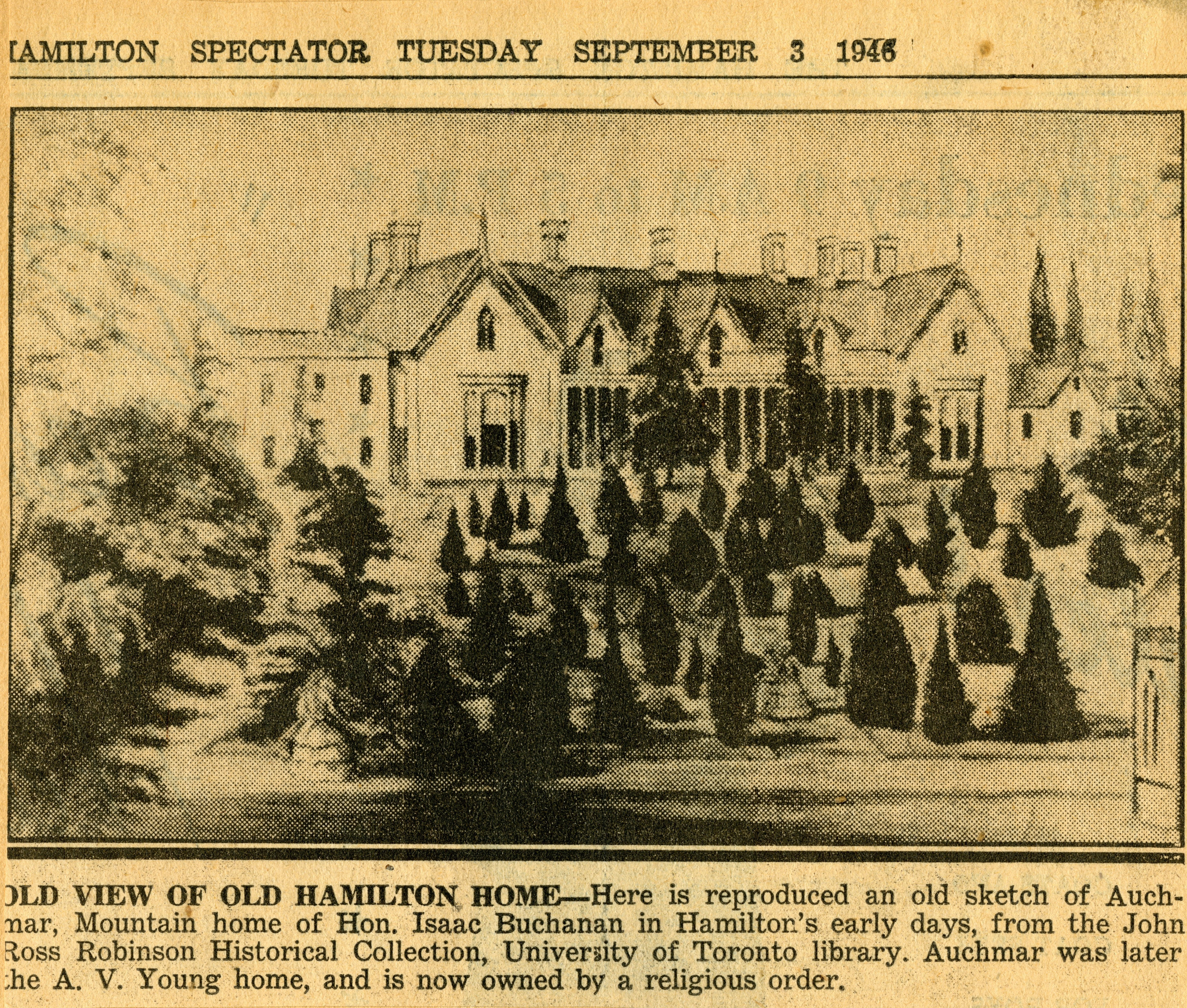
The property originally stretched to the edge of the escarpment and consisted of 86 acres of land, located at what is now the northeast corner of Fennell Avenue and West 5th St. The grounds, named Claremount for the “clear mountain” view, were charmingly landscaped during Buchanan’s time. Access was provided via a treed allée, passing through an arched entranceway that is no longer accessible. The estate included the main manor house, a matching gatehouse, a stable, and a dovecote. There were high garden walls in stone, landscaped grounds, large lawns, and an apple orchard. All of which provided a picturesque and secluded setting for the Buchanan family and their guests. The manor house featured gothic revival characteristics such as pointed arched windows, clustered chimneys, multiple gables, and bargeboard decoration on the exterior, as well as interior detailing such as rib vaulted hallways and pointed arched doors. The outbuildings also integrated gothic revival architecture to create a cohesive and harmonious aspect.

The home was designed on a Roman cross plan, with a vaulted central hallway running the full width of the house, creating a cathedral effect. The main hallway was originally capped at the east entrance by a conservatory and at the western-end by a ballroom. The ballroom was the largest of the four main floor rooms at 40 feet long. With attractive large windows overlooking the grounds, the space was used to host friends, religious officials, and dignitaries including Sir John A. Macdonald. Winding staircases led to several upstairs rooms. French doors and ten fireplaces added to the grandeur and warmth of the home. Combined with the glamour of the gothic style was a modern sensibility. The manor house also included a furnace, indoor lavatory, and a basement kitchen, uncommon amenities at that time.
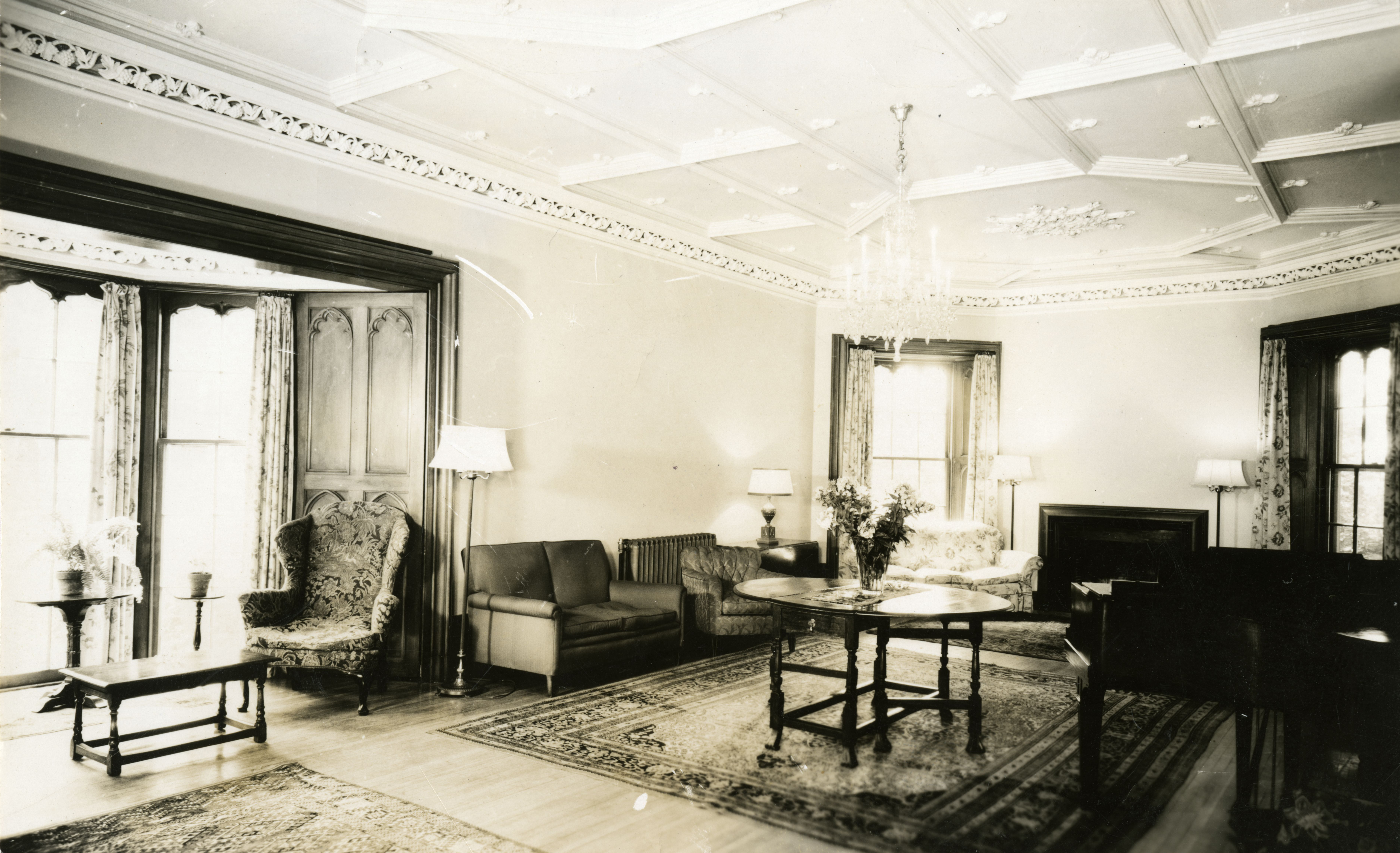
Isaac Buchanan was a devoted Presbyterian and became an important lay figure in the establishment of the Free Church of Scotland. He provided funds for the foundation of several Knox Presbyterian churches throughout Canada including in Toronto and Hamilton. His granddaughter Evelyn noted that during her family’s time at Auchmar “frequent services of the Presbyterian faith were conducted [there] by the long time minister of the McNab Street Church, Dr. Fletcher.” (Evelyn Buchanan to Sr. Mary Schwartz, November 22, 1956, Bishop Farrell Library & Archives (BFLA), SSS Fonds, Series 21, File 8)
In 1881, the Auchmar Estate was sold to Captain Alfred Triggs, a retired army officer and lay preacher for the Plymouth Brethren. As a man committed to his faith, Triggs used the ballroom as a chapel, often preaching there on Sundays.
The Auchmar property was re-acquired by the Buchanan family in the early 1900s, purchased by Isaac Buchanan’s son, James Buchanan and given to his younger sister Helen Elizabeth Jarvie Buchanan (Elsie). Over the next twenty-five years, Auchmar once again served as a place of hospitality for the Buchanan family. Elsie also used the estate as a temporary home for unwed mothers. As a supporter of a Presbyterian Home for Girls in Toronto and the local Salvation Army, caring for those in need, particularly women and children, was a cause close to her heart.
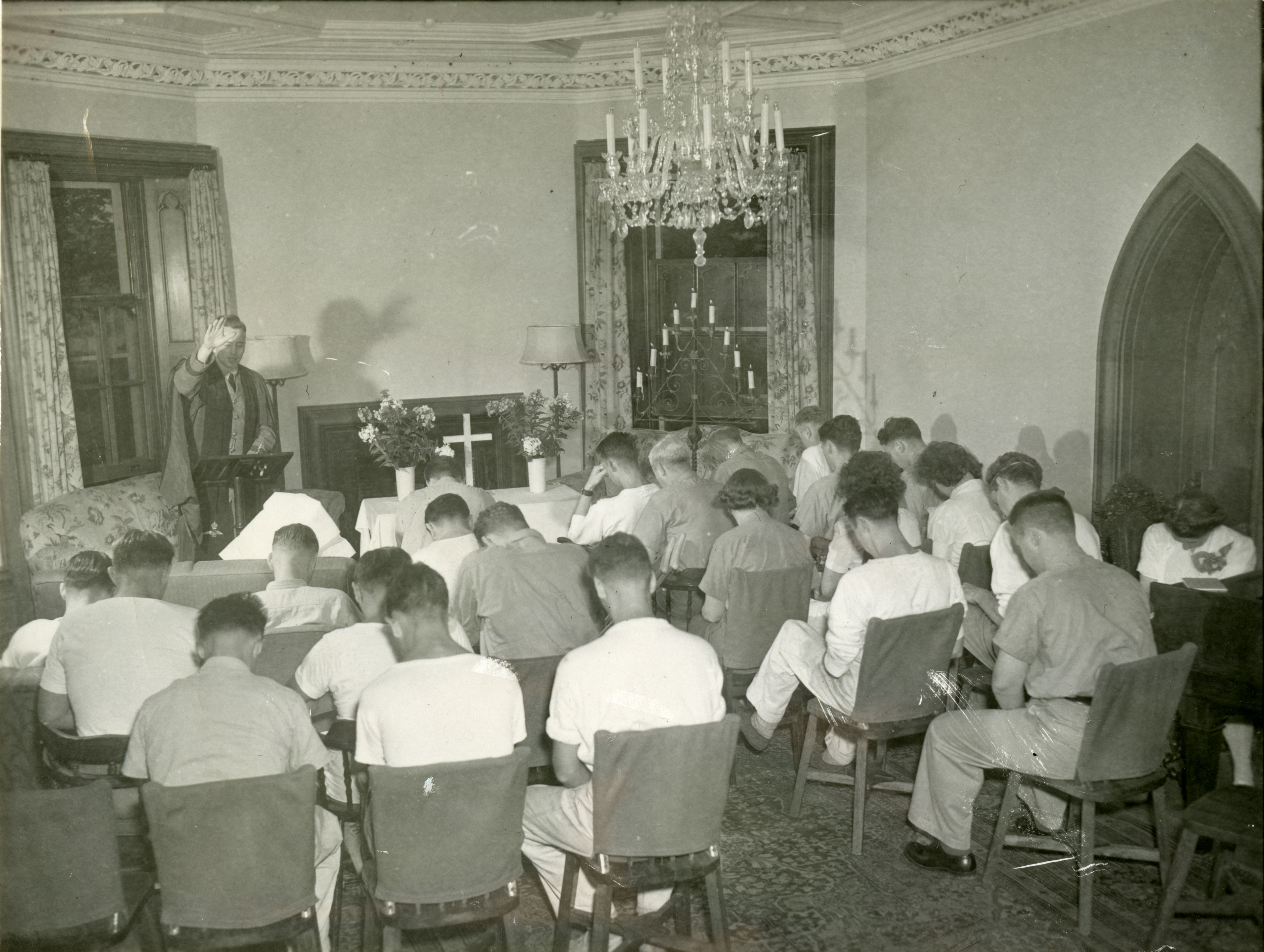
Between 1926 and 1946 the property was owned by a prominent Hamilton businessman and Presbyterian Allan Vernon Young. From 1943 to 1946 Young allowed the building and grounds to be utilized by the nearby Ontario Hospital for injured members of the R.C.A.F. returning from World War II. The R.C.A.F also used the ballroom as a chapel; a space that was more often a place of worship during its history than as originally intended. Maintenance of the building and grounds during this time included installing water mains, sewers, electricity and gas, as well as, planting fruit trees.
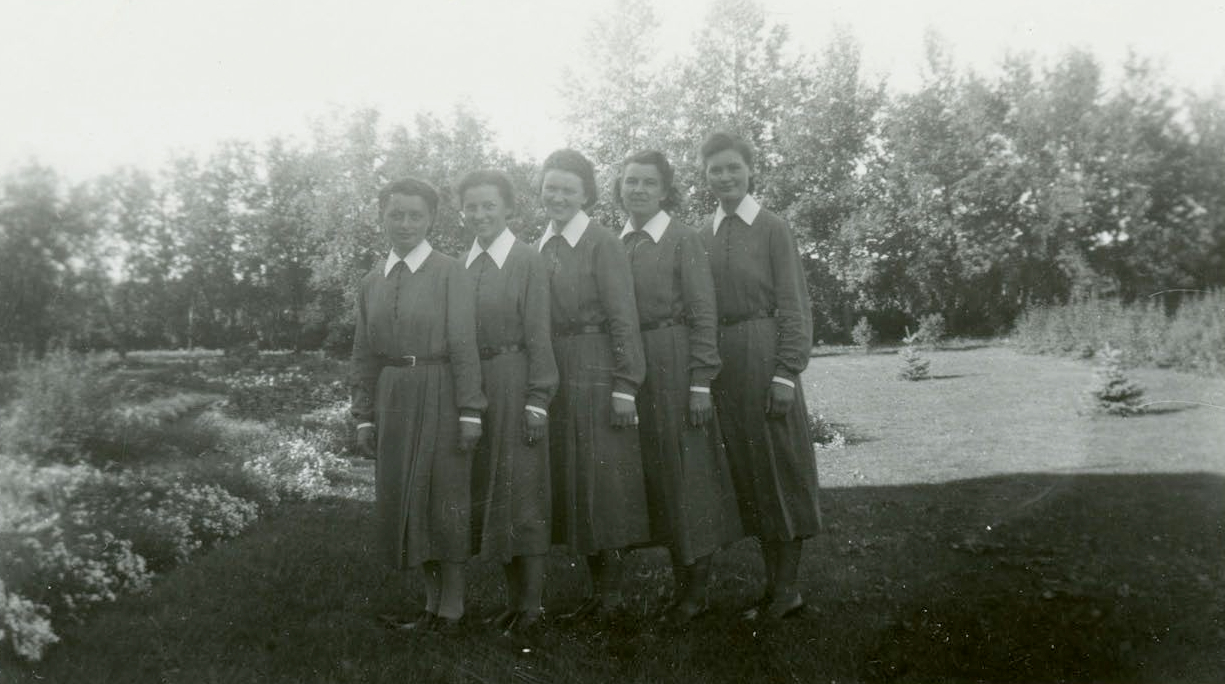
In 1946, the property was purchased by the Sisters of Social Service. A religious community of women, the Sisters of Social Service (SSS) were founded in 1908 in Hungary as a response to the needs of those who were socially, economically, and politically powerless. Grounded in Benedictine spirituality, they are professionally trained to serve in the fields of social work, evangelization, women’s movements, and social justice. They first came to Canada in 1923 to minister to a Hungarian community in Stockholm, Saskatchewan. They extended into Ontario at the invitation of Bishop Joseph Ryan, sixth Bishop of the Diocese of Hamilton, who in 1943 asked the SSS to take a census of the Hungarians in the City of Hamilton. This endeavor lead to the founding of St. Stephen of Hungary Parish. Bishop Ryan then asked the Sisters of Social Service to stay and run a retreat centre. It was at this time that they purchased the Auchmar property, as the home for their outreach.

The Sisters of Social Service took over the building in January 1946. Minor alterations and repairs were made at the time. Furnishings were bought on credit or were received through the generosity of local community groups and individuals. The local Superior Sister Mary Schwartz was a driving force in organizing and garnering support. She appealed for donations, gifts-in-kind, and extensions to loans, in addition to cleaning and setting up the home. When she first moved into the massive 26 room house, it was just her and one other, Sister Columba, tasked with arranging for these provisions. In recollections of her early days at Auchmar, Sister Mary recalled, “Although we asked for the stove, it was not given to us. The furnace had a problem and it was not working. I think the two of us will never forget that January 23. But God blessed the trust we had in Him. Pieces of equipment came in one after another… we ordered beds and bed sheets… painted the whole house… And we didn’t have a cent with which to do it.” (Sister Mary Schwartz, “Work Report”, 1950, BFLA, Series 21, File 19)
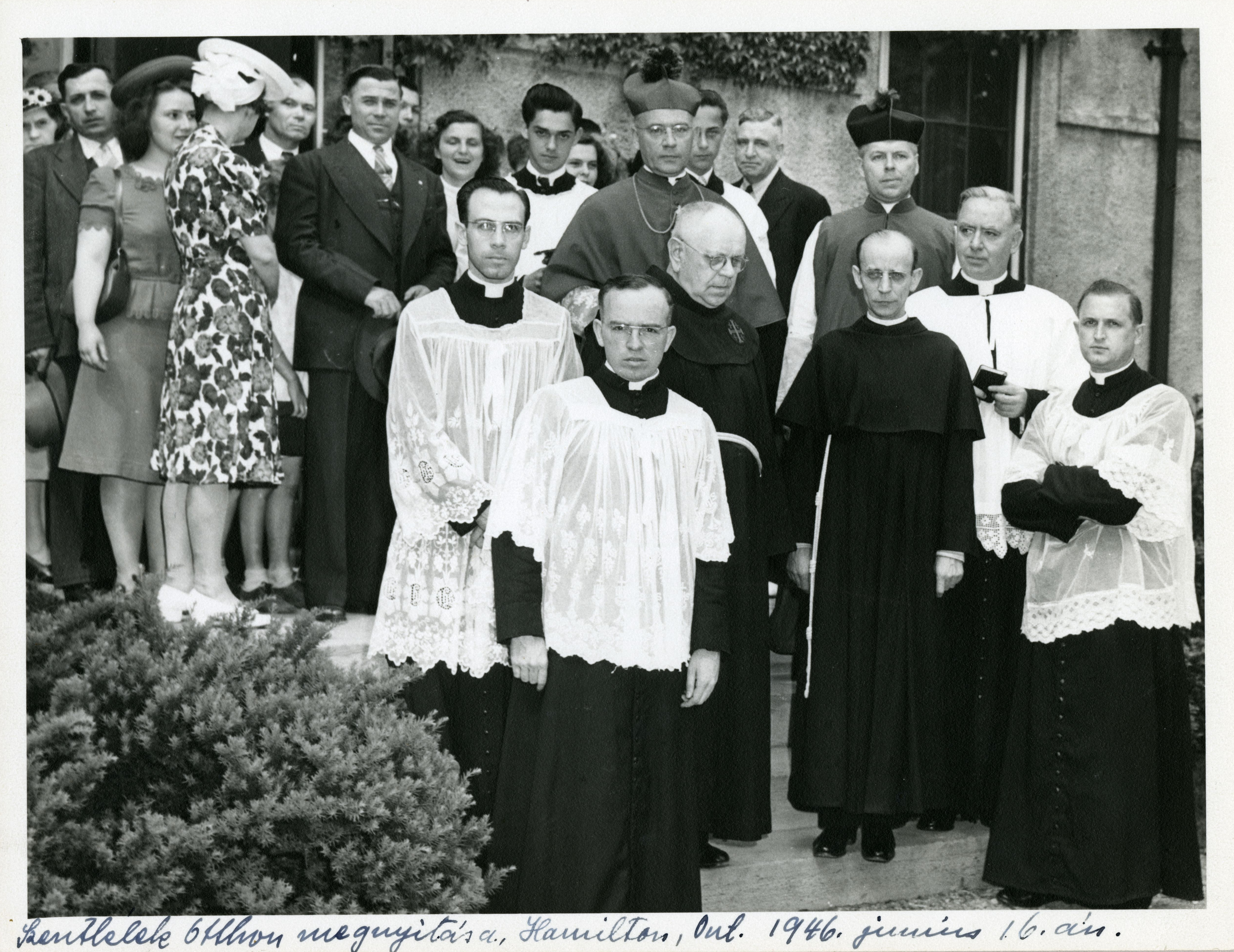
On June 16, 1946, the retreat centre was officially opened by the Sisters of Social Service as the Holy Spirit Home and blessed by Bishop Ryan. The name was changed twice. First to Mount Cenacle, following a contest to find a name suitable for its growing success as a retreat centre. Out of 56 people who responded to the contest, the prize of $25 went to a local Cathedral High School student Paul Kovacs. The first part of the name, “Mount” reflected the location of the home on the Hamilton Mountain. The second part “Cenacle”, was in reference to the charism of the Sisters of Social Service, which is dedicated to the Holy Spirit. Cenacle is the term used for the “upper room” where the Apostles waited for the coming of the Holy Spirit on Pentecost. In the early 1980s, the name was changed again to Holy Spirit Centre to better reflect the work of the SSS and to limit confusion with the Cenacle Sisters, a separate Religious Order of Women.
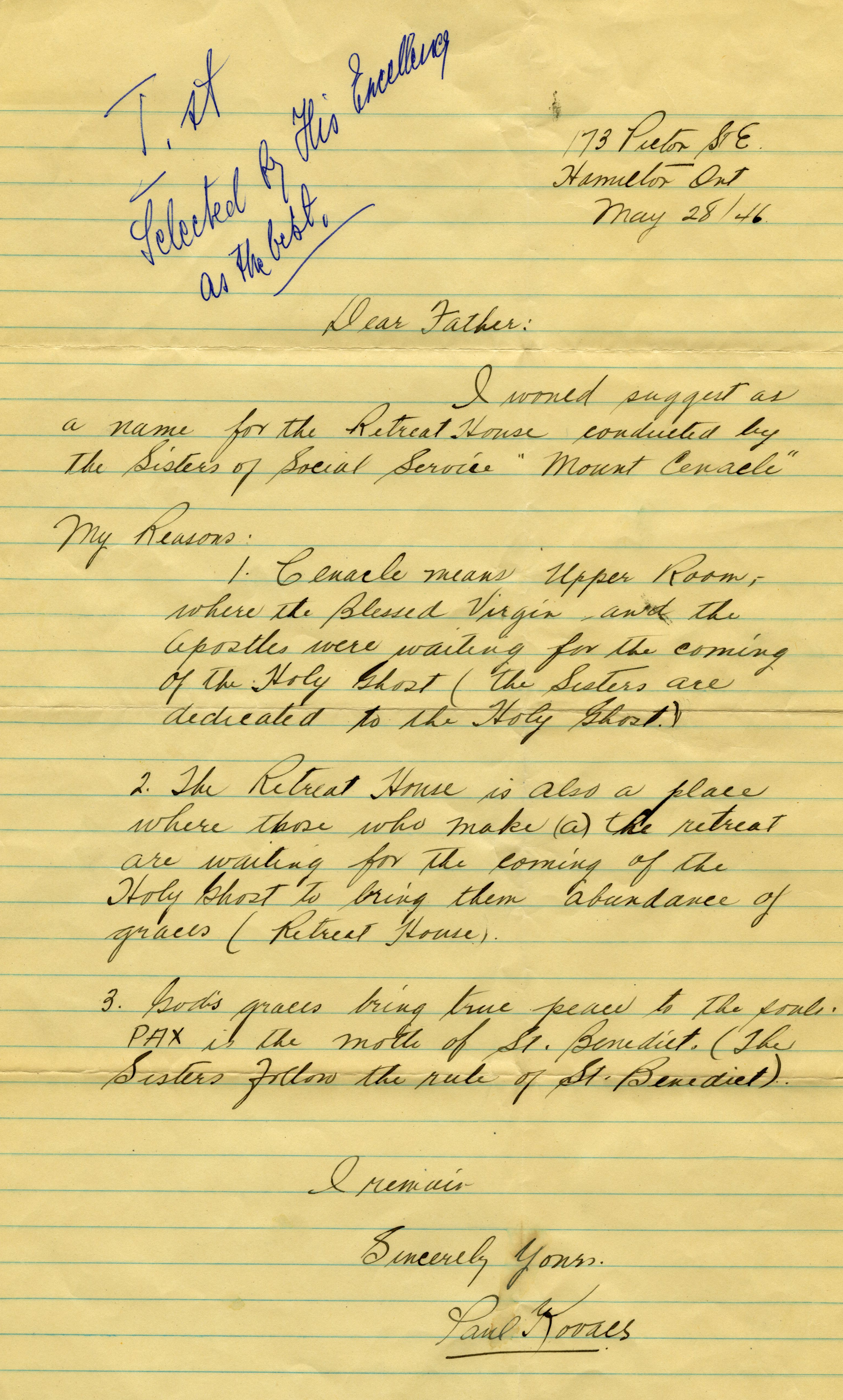
For 52 years, the Sisters of Social Service offered retreats out of the Auchmar location, providing a safe and welcoming space for diverse Catholic, ecumenical, and secular groups including politicians, clergy, students, educators, healthcare professionals, new immigrants, and support groups such as Alcoholic Anonymous. At its peak in the early 1960s, the retreat centre was serving upwards of 2,000 individuals in a year. In 1965 for instance, 2,160 people shared in community gatherings with the SSS, as retreatants or students attending recollection days. (“Retreathouse in Hamilton, Six Year Attendance Review”, 1965, BFLA, SSS Fonds, Series 21, File 4) Auchmar as retreat centre was a place “…where care-giving people could find affirmation and knowledge and where weary souls could find rest and renewed hope. Above all it was a life-giving place full of music and silence, celebration and ritual.” (JoAnne Walter, Chairperson, Holy Spirit Centre Advisory Committee, “Letter to the Editor”, The Hamilton News, Mountain Edition February 28, 1999, BFLA, SSS Fonds, Series 21, File 1)
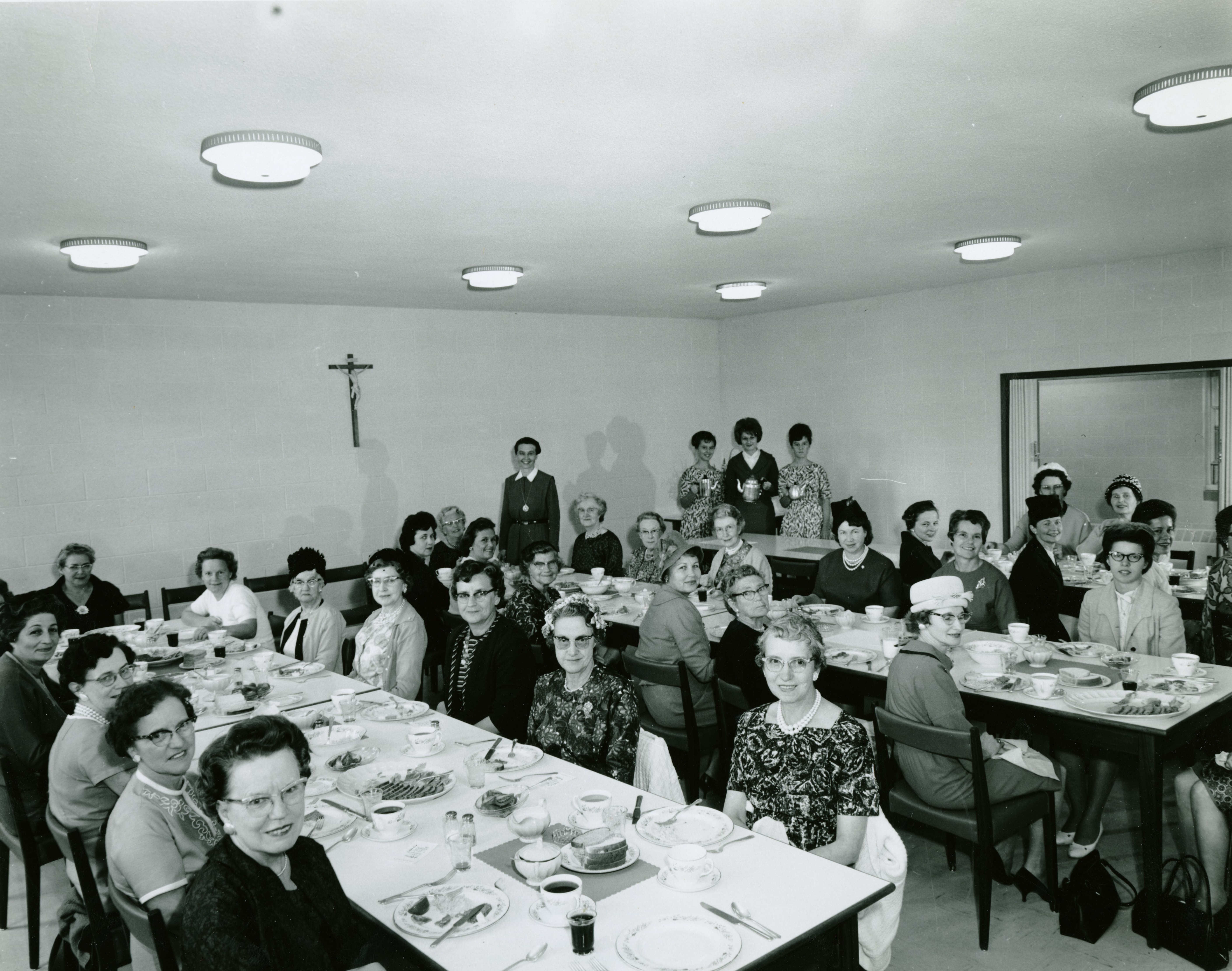
The Sisters of Social Service also supported the development of parishes and the care of immigrant communities within the Diocese of Hamilton. Retreats were organized for new immigrant groups and Mass would be offered in native languages until a suitable church and parish community were developed. Priests for these communities would often live with the Sisters during this period. Parishes with their roots at Mount Cenacle include: Our Lady of Mercy (Lithuanian), St. Boniface (German), Our Lady of Fatima (Portuguese), St. Charles Garnier (French), St. Eugene, Sts. Peter and Paul, Our Lady of the Assumption (Slovak-Greek), Regina Mundi, and Holy Cross (Croatian). Mount Cenacle “acted as a welcome center for hundreds of immigrant families… and helped over 100 families start their lives off as new Canadian citizens.” (Sr. Mary Schwartz, “Auchmar House and Its Residents, 1908 – 1962”, 1962, BFLA, SSS Fonds, Series 21, File 23)
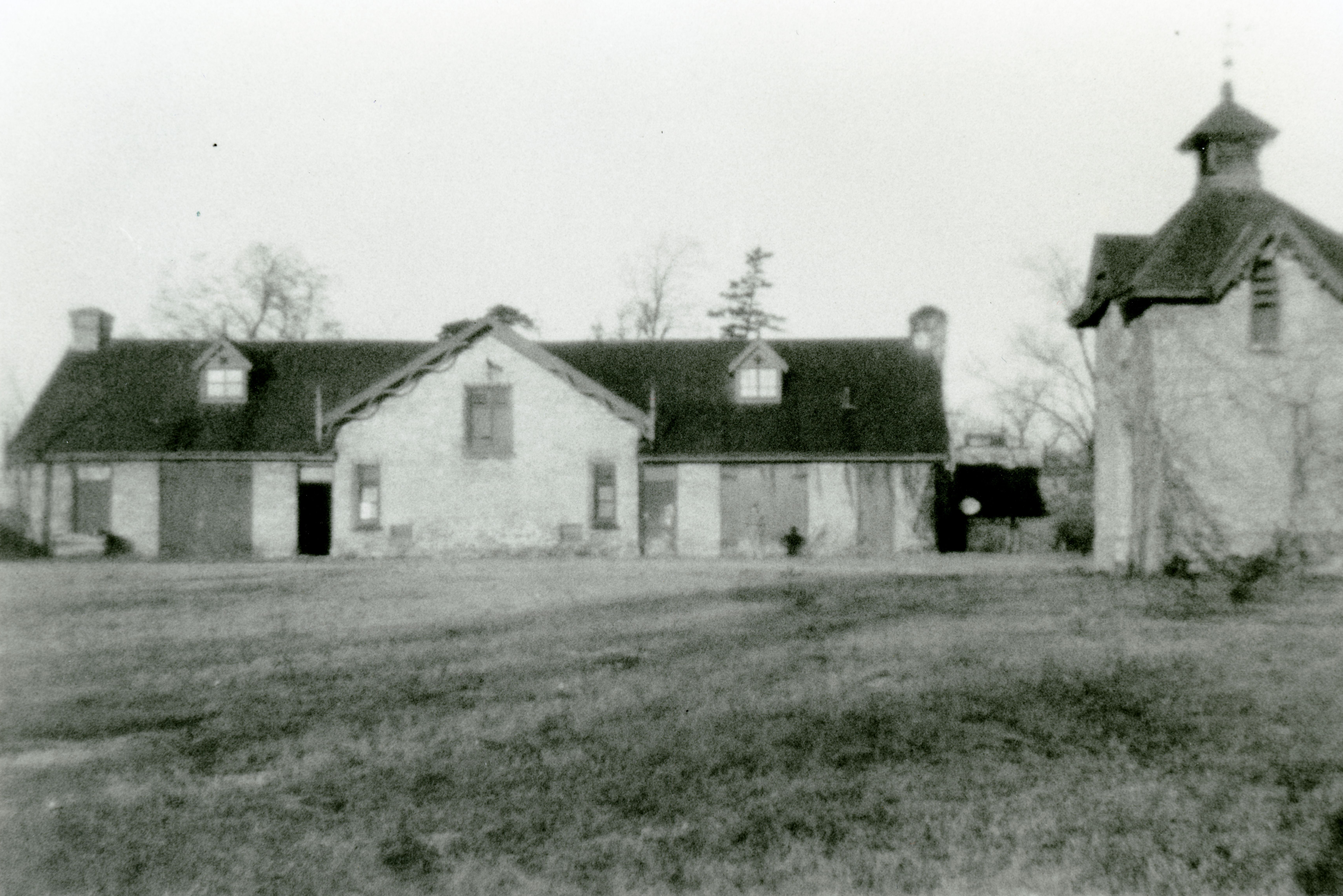
Over the years, additions were made to the Auchmar building to facilitate the work of the Sisters of Social Service. This included two renovations to the stables, in 1947 and 1988. This space became known as the Annex and functioned as housing quarters for the Sisters and their guests, including priests stationed with them during the building of their rectories, vacationing visitors letting out rooms during the summer, and newly arrived immigrants. During the early years, the Sisters had a saying, “Take up they bed and walk”, as during retreats they would give up their own beds and sleep in the common area to make room for retreatants. In 1963, to accommodate for the growth in their retreat numbers, the Sisters added a retreat wing with a two-storey dormitory, chapel, administrative area, kitchen, cafeteria, and garage.
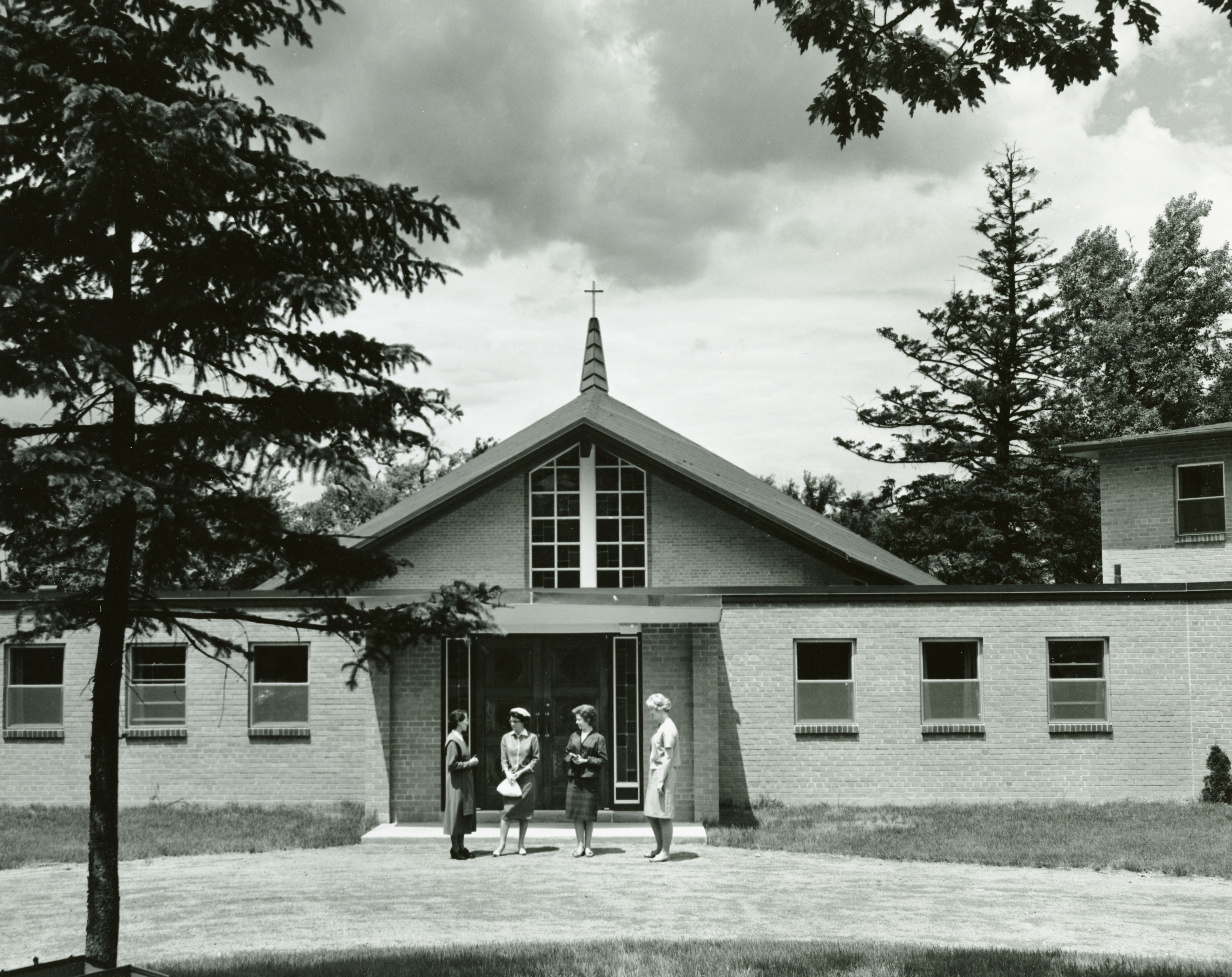
The Sisters of Social Service continued to run retreats out of this location until 1998 when it was clear, due to the limited numbers of novitiates entering the SSS and the aging population of the Sisters, that they could no longer manage the building. Auchmar House was eventually sold to the City of Hamilton in 1999 as a heritage property.

Auchmar House is a stunning building, full of fascinating stories. The one constant throughout its history is that those who lived within its walls felt a deep connection to their faith and community. The building and grounds functioned as a place for hospitality, family, community service, outreach, and spiritual enrichment. As Evelyn Buchanan, the granddaughter of Auchmar’s founder, observed, “since its earliest days Auchmar House has been a place where God was both known and worshipped. The form of worship has varied but always God has been at home here.” (Evelyn Buchanan to Sr. Mary Schwartz, November 22, 1956, BFLA, SSS Fonds, Series 21, File 8)
Sources:
“Auchmar House”, Canada’s Historic Places Online: https://www.historicplaces.ca/en/rep-reg/place-lieu.aspx?id=8164&pid=0, accessed August 2020
“Auchmar Puchase, Nov. 23/45”, Bishop Farrell & Archives, SSS Fonds, Series 21, File 10
Bailey, Rev. T. Melville, “Isaac Buchanan: Autopsy of a Presbyterian Layman”, 1995, Bishop Farrell Library & Archives, SSS Fonds, Series 21, File 9
Bailey, Rev. T. Melville, “Sketches Auchmar House and Sir Isaac Buchanan”, Traces, Places, and Faces: Links between Canada and Scotland, Hamilton: Walsh Printing Service, 1957, Bishop Farrell Library & Archives, SSS Fonds, Series 21, File 9
“Basic Facts, 1946 – 1996”, Bishop Farrell Library & Archives, SSS Fonds, Series 21, File 1
“Isaac Buchanan”, Dictionary of Canadian Biography Online: http://www.biographi.ca/en/bio/buchanan_isaac_11E.html, accessed August 2020
Jones, Donald, “One of the First Great Canadian Merchant Princes”, The Toronto Star, April 15, 1989, Bishop Farrell Library & Archives, SSS Fonds, Series 21, File 9
Lauder, Alma, “Sketches of the Buchanan Homestead and Sir Isaac Buchanan”, Wentworth Landmarks, Hamilton: Spectator Printing Company, 1897, Bishop Farrell Library & Archives, SSS Fonds, Series 21, File 8
Lei, Dr. Christine, “Mount Cenacle and Holy Spirit Centre: The Work of the Sisters of Social Service in Hamilton, Ontario: 1945-1999”, Presentation to the Head-of-the-Lake Historical Society, January 8, 2010, Bishop Farrell Library & Archives, SSS Fonds, Series 16, File 6
Lei, Dr. Christine, “Presentation to the Ancaster Historical Society”, n.d., Bishop Farrell Library & Archives, SSS Fonds, Series 16, File 6
McCullough, Charles R., “The Hon. Isaac Buchanan. Merchant, M.P., and Miltiaman”, The Hamilton Spectator, March 16 and March 23, 1946, Bishop Farrell Library & Archives, SSS Fonds, Series 21, File 9
Schwartz, Sr. Mary, “Auchmar House and Its Residents, 1908 – 1962”, 1962, Bishop Farrell Library & Archives, SSS Fonds, Series 21, File 23
Schwartz, Sr. Mary, “Hamilton, 1944 – 1965”, 1965, Bishop Farrell Library & Archives, SSS Fonds, Series 21, File 6
Schwartz, Sr. Mary, “Work Report”, 1950, Bishop Farrell Library & Archives, SSS Fonds, Series 21, File 19
Walter, JoAnne, “Letter to the Editor”, February 28, 1999, Bishop Farrell Library & Archives, SSS Fonds, Series 21, file 1
Pingback: Auchmar Estate | Catholic Canada